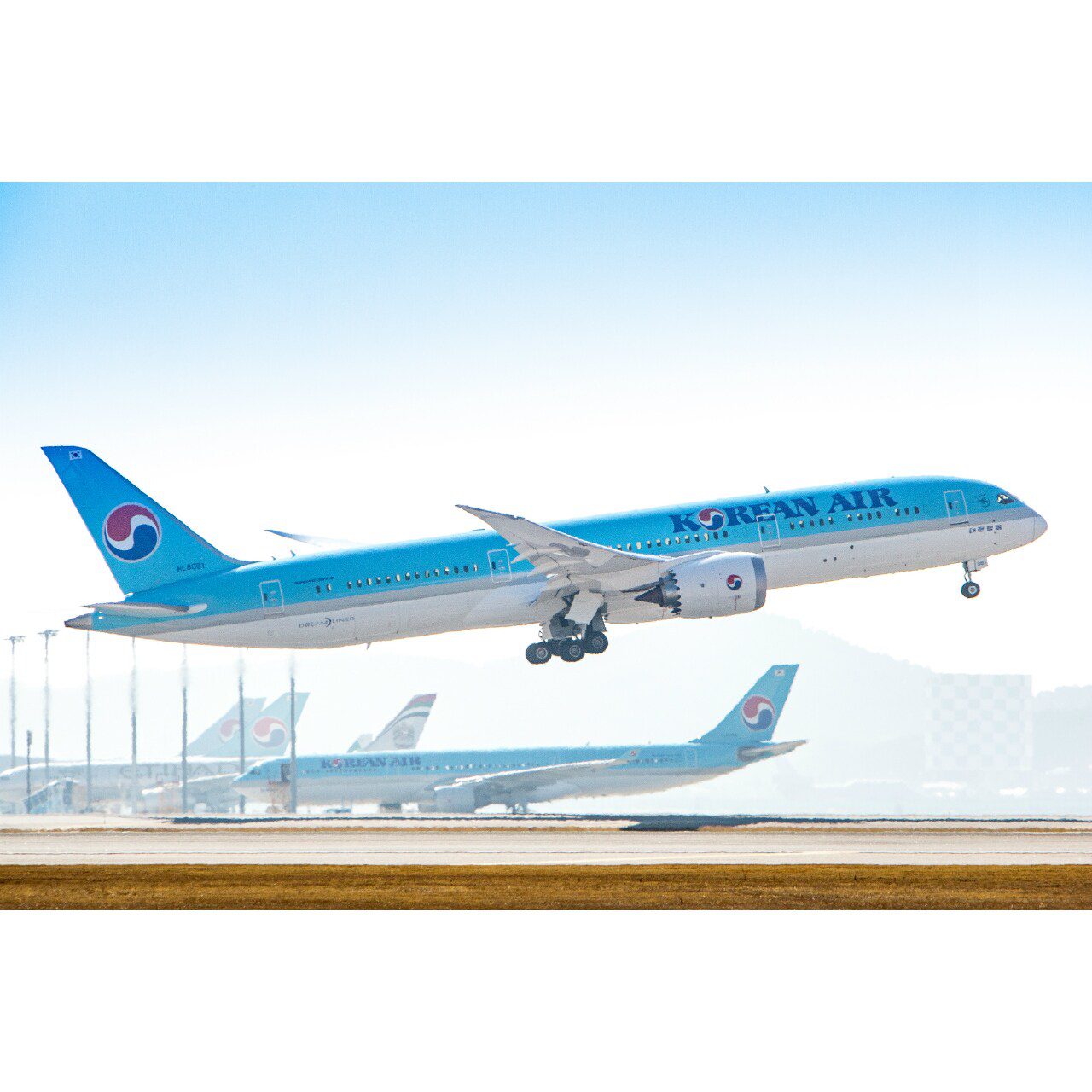
210813 Korean Airs B787 9 thumbnail
Despite continued travel restrictions within the Asia Pacific region, Korean Air has returned to profit in 2021. The carrier benefitted in particular from strong cargo revenues, which increased by almost sixty percent year-on-year, it reported in January 27. Operating profits were even the highest ever in Korean’s 53-year history. Korean Air reports strongest year thanks to cargo.
Korean ended 2021 with a net profit of KRW 6.387 billion compared to a KRW 1.946 million loss in 2020. The operating profit improved a staggering 514.5 percent to KRW 14.644 billion versus KRW 2.383 billion, with operational expenses up by just 1.7 percent to KRW 72.890 billion. By comparison: Korean’s previous record operating profit was KRW 11.589 billion in 2010, with Q4 2016 the best quarter with KRW 4.476 billion until last year’s KRW 7.044 billion. Last Q3 was also a strong quarter.
It is in the revenues that 2021 differs significantly from 2020. Total revenues were up to KRW 87.534 billion from KRW 74.050, but the mix shifted away from passenger revenues towards cargo. Passenger revenues were KRW 10.839 billion, down from KRW 20.052 the previous year. Cargo revenues went up the other way to KRW 66.948 billion from KRW 42.507 billion.
Almost one-third of cargo revenues come from a very strong final quarter, or KRW 21.807 billion compared to 13.609 billion in Q4 of 2020. Total revenues for the quarter were KRW 28.259 billion, which again reflects the strong performance of Korean’s cargo operations. The result comes not so much from more tons carried (cargo tons kilometers up 13.6 percent to 2.8 million), but from noticeable higher fares as a seasonal peak in demand and prolonged supply chain disruptions pushed revenues and yields up. Semiconductors, automobiles, and batteries were in very high demand, notably on North American routes that comprise 51 percent of Korean’s cargo routes in Q4. By region, Korea, China, and South East Asia were the strongest with a combined 77 market share.
Korean Air’s passenger revenues were 64 percent dependent on domestic services, with the US the second-best performing market at 21 percent. On sales by route, the US-dominated by 51 percent, ahead of 23 percent domestic. Quarantine-free travel boosted travel to Singapore, Guam, and Hawaii. Load factors improved to 81.1 percent in Q4, doubling from 40.6 percent in 2020.
Mixed concerns over 2022
Omicron is giving the carrier mixed concerns as it looks ahead to 2022, with the recovery entirely dependent on how Covid-variants develop. Korean continues to be as flexible as possible and operates routes in accordance with market response. It is also seeing opportunities for charters for business flights and events as the Winter Olympic Games that start in Beijing coming week, although the event isn’t open to foreign visitors. Even the cargo market is uncertain and depends on Covid and economic fluctuations, with a stable operation strategy and timely response to market changes, the carrier hopes to continue its strong results.
Korean Air reduced its passenger fleet by five aircraft to 131, by retiring five Boeing 737NGs. Its full-freighter fleet remained static at 23, including twelve 777Fs. This brings the total fleet to 154. The airline continues its integration plans with Asiana Airlines, which was first announced in 2020. The business combination report is currently under review. Once approved, Korean will take a 63.9 percent share in Asiana and integrate its former rival later in 2022.
Korean CEO Walter Cho said early in January: “Upon completion of the acquisition, Korean Air will emerge as a top-10 global airline of which you, our customers and our country can be proud. This merger and acquisition is not simply the combination of two airlines; it’s a combination of two cultures that will be stronger together. It will reform the Korean aviation industry, and allow us to write a new history. It will take some time for our two companies to be fully integrated, but let’s prepare ourselves to welcome our new family with open arms when we become one. Our cultures will adapt and grow together.”
Cho said on 2022 that this year is crucial to the airline. “The disruption brought by the pandemic has created a paradigm shift. And while there will be challenges ahead of us, I’m confident that we’ll step up and overcome them as we always have.”
Views: 14



